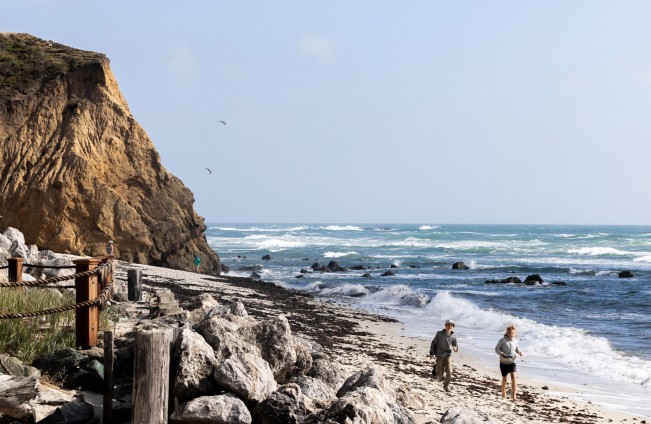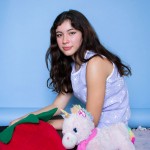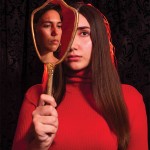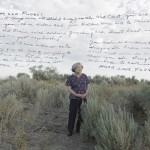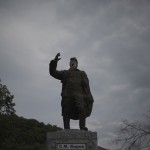2022 Hearst Journalism Awards: Julia Nikhinson: 2022 Second Place Photojournalism Winner
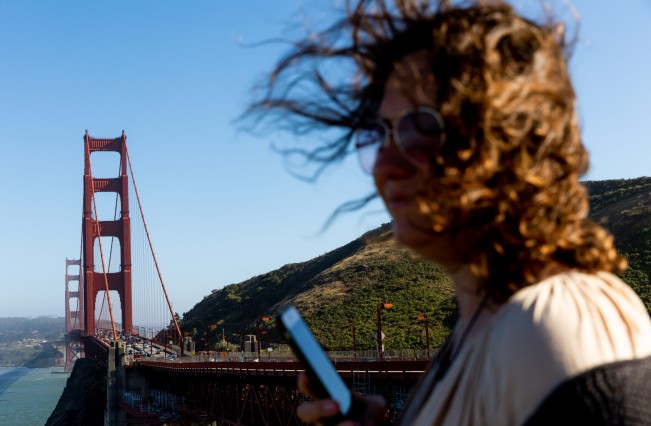
© Julia Nikhinson, Ukrainian refugee Maria Anchyshkina visits the Golden Gate Bridge in San Francisco in May 2022. After a difficult journey to the United States, she and her son, Petro Podinako, have resettled in San Carlos, California, with Maria’s brother. But like many Ukrainian refugees, she wishes that she could go home.
This week we are celebrating photographers who have received a 2022 Hearst National Championship Award. Today we focus on National Photojournalism Championship Second Place Winner, Julia Nikhinson from University of Maryland, who received a $7500 scholarship and Hearst Medallion. The Hearst Story Prompt was “Individual expression and the California Dream.”
The Hearst Championships are the culmination of the 2021 – 2022 Journalism Awards Program, which were held in 103 member universities of the Association of Schools of Journalism and Mass Communication with accredited undergraduate journalism programs. From May 20 – 25, 2022, 29 finalists – winners from the 14 monthly competitions – participated in the 62nd annual Hearst Championships in San Francisco where they demonstrated their writing, photography, audio, television and multimedia skills in spot assignments. The assignments were chosen by media professionals who judged the finalists’ work throughout the year and at the Championships.
Julia Nikhinson is recent graduate from University of Maryland with a BA in Government and Politics and a concentration in Journalism. As a freelance photojournalist based in Washington, D.C. and Maryland, she is available for assignment anywhere. Her work as been recognized by the Hearst Journalism Awards Program, the National Newspaper Association, the Society of Professional Journalists and CNN’s 2021 Year in Pictures. She is a member of Women Photojournalists of Washington, the National Press Photographers Association and the Society of Professional Journalists.
Follow Julia Nikhinson on Instagram: @julia.nikhinson
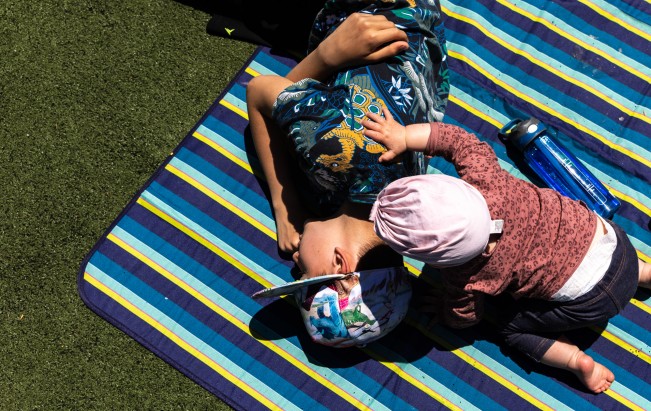
©Julia Nikhinson, Petro Podinako’s 9-month-old cousin, Julia, crawls over him as he naps during a soccer game. The extended family spent an afternoon at Crocker Amazon Soccer Fields in San Francisco, watching Lyke, Petro’s 11-year-old cousin, play youth soccer.
Story Summary
Until recently, Maria Anchyshkina shuddered when planes flew overhead through the blue California sky. On February 24, Maria and her 12-year-old son Petro Podinako were living in Lviv, Ukraine when Russian troops invaded the country. Ukrainians lived in terror under constant air raid sirens and explosions. “It was scary because we were never sure of what would happen next,” Maria said.
Two days later, Maria sent Petro to Poland with her mother. Instead of following them to safety, Maria stayed in Lviv, a refugee hub for the country. For almost two months she helped refugees find shelter and escape the country, and when the crowds of refugees started to thin out, Maria left for Poland.
Maria and Petro had a flight to the U.S. from Frankfurt, Germany, but were barred from boarding when they didn’t have the necessary visa for a layover in Seattle. Instead, they journeyed through Brussels, Cuba, Cancun, Mexico City, Tijuana and a refugee camp on the Mexican border. On April 18, Maria and Petro finally crossed the border, reaching their new home — San Carlos, California — where Maria’s brother Yegor lives with his wife Vira and three children. Stepping onto unfamiliar soil, Petro began learning English from scratch, while Maria was already semi-fluent from watching American television like “Friends” and “Sex in the City”.
Now, Maria has a different fight ahead of her. In Ukraine, she was a psychotherapist. However, the humanitarian parole that allowed Maria to claim asylum doesn’t allow her to work in the United States. So instead, she volunteers as a therapist every day, providing free services to her Ukrainian clients who can no longer afford such healthcare. Before the war, Maria chose to become a therapist because she was good at it and liked being able to help people. Now, she’s a therapist specializing in trauma because the people she once served need her help.
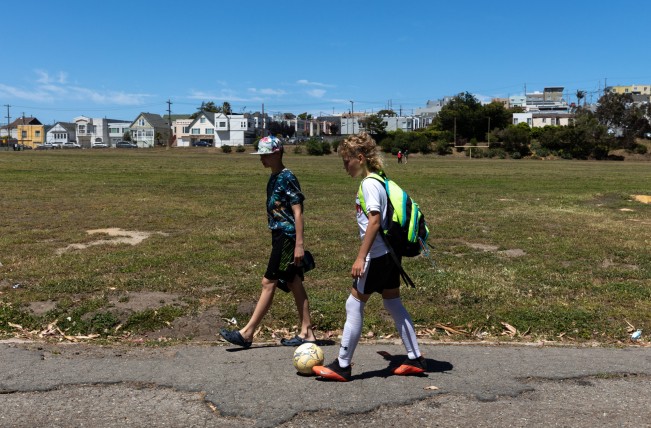
©Julia Nikhinson, Petro and Lyke walk to the parking lot after Lyke’s soccer game. Spending time with his younger cousin is one of Petro’s favorite things about relocating to the United States from the Ukraine.
Judy Walgren: If you could tell us a little bit about how yourself and how came to photography that would be great way to start.
Julia Nikhinson: How I got into photography? Well, honestly, I’ve been photographing for most of my life! Both of my parents are software engineers, but my dad has done photography as a hobby for my entire life and my mom’s grandfather, who died a few months before I was born, was actually a professional photographer before he came to the United States. So, it was always kind of a thing in my family and wasn’t a foreign subject, I guess, for my parents.
Growing up and when I was very little, I had this little yellow film camera and then as digital cameras kind of came to the forefront in the early 2000s like I had a little point and shoots
Eventually, I got a DSLR when I was in middle school—a little Canon Rebel T3i.
Then going into high school, I was an art kid through and through, so I was taking photo classes and taking senior portraits on the side and things like that. But photojournalism was not really like anything and knew about or really even considered as a career option. I was just taking photos for fun. When I got to college, I was a government and politics major, which is what I graduated with.
I was in the central part of campus a few days into freshman year taking photos of a friend and some guy walked past me and saw that I had a camera and was like you should apply to join the Diamondbacks photo staff. I didn’t know what the Diamondback even was, but I was a freshman and as you know, freshmen sign up for anything and everything, so I applied, and I got the photo job! Looking back at the work that I submitted—it was very surprising—but it worked out.
So, I started as a photographer at the Diamonback, which is Maryland’s student newspaper, a few weeks into my freshman year and then in April of my freshman year, I was promoted to photo editor. I think I was the youngest photo editor in a long, long time. I stayed as the photo editor for the following three years until this April before graduating. That’s how that’s how I got into photography.
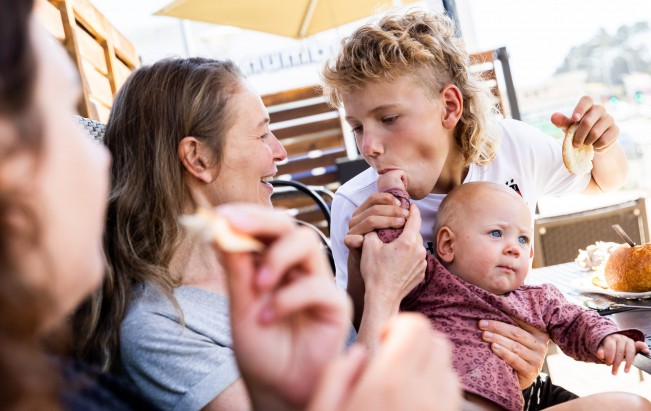
©Julia Nikhinson, Maria looks on as her nephew Lyke tastes broccoli cheddar soup from of his sister Julia’s finger. Saturday was Maria and Petro’s first time at Panera, which is the first restaurant they’ve been to since relocating to the United States from Ukraine.
Judy: That’s an amazing story, did you grow up in Maryland or did you grow up somewhere else?
Julia: Yeah, born and raised in Maryland but my entire family—they’re from the Soviet Union, which is now Ukraine and they came over as Jewish refugees in 1991-1992, which, obviously, as you probably figured out, informs my photo story, a great deal.
Judy: I want to just pause for a moment and just say you know our hearts and minds are with the people of Ukraine.
Julia: Definitely, I appreciate that.
Judy: So, you’re not a journalism major, right? How is the photojournalism program at Maryland?
Julia: Maryland does not have a very robust photojournalism program. It’s literally two classes: photojournalism and advanced photojournalism—and it doesn’t get very advanced—maybe for someone who’s never used a camera before. So, it’s more of a thing that teaches reporters how to take pictures, rather than photojournalists. However, the professor is great, and I still share my work with him for feedback. But Maryland has a great journalism school, you can see it in all the rankings and its right next to DC, so it would be a great place to have a photojournalism program. Maybe in the future.
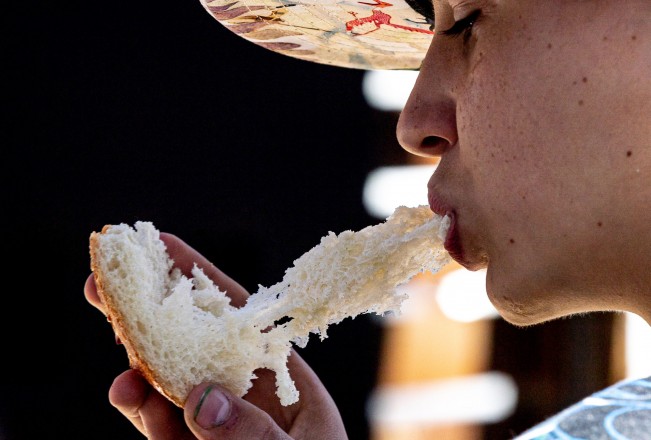
©Julia Nikhinson, Petro savors a Panera Bread sourdough bread bowl, a reminder of home where the family often ate a similar Ukrainian dish. “It was delicious,” said Petro of the American bread bowl soup.
Judy: You mentioned a professor who you share your work with for feedback?
Julia: Tim Jacobson! I took him for both photojournalism classes—I think he usually just teaches the advanced class but I had him for both—and he’s just been really great to bounce ideas off of and help me choose which photos to use. He’s just been a really great mentor throughout the past few years.
Judy: That’s a great lead in to asking who are other photojournalists or photographer’s who have inspired you?
Julia: A lot of my colleagues in Washington DC have been very influential. Sarahbeth Maney—her work is great, and she just finished being the New York Times fellow. And Erin Schaff—someone I’ve only met a few times, but I’ve been looking at her work for years. And Kenny Holston, Al Drago. And there are a lot of great people working in Ukraine right now—Carol Guzy. As for in-depth storytelling, Gabrielle Luri comes to mind. In-depth storytelling in my weak point, so looking at her work is helping me learn more.
Julia: Not to look at it, too often, but a lot of people that are in Ukraine have like really great work so on.
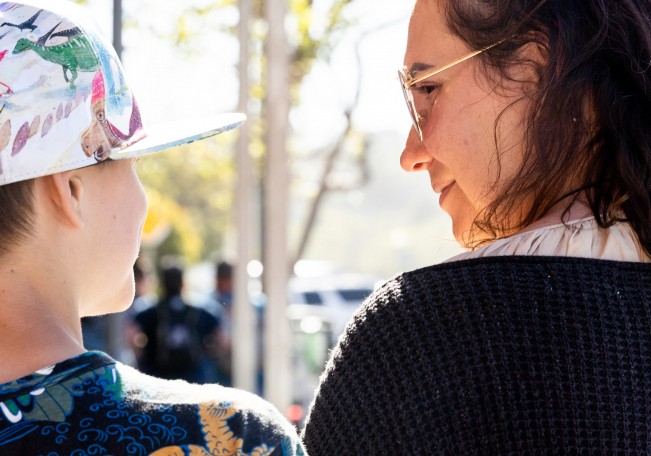
©Julia Nikhinson, Petro and Maria talk while visiting San Francisco for the first time. Petro often asks contemplative questions of Maria, such as “Why do women stay in abusive relationships?” or “Why does the world consider Russia a nuclear power?” or “Why is Russian President Vladimir Putin such a psychopath?”
Judy: Now that you’ve graduated, what what’s your plan moving forward?
Julia: On June 27th I’m starting a six-month photo internship with the Associated Press in New York, and I am very excited for that! It sounds like its going to be a great opportunity, and coming into college, I would have never imagined that I would become a photojournalist. And then, when I decided that I wanted to pursue photojournalism instead of law or politics or something like that, if someone told me that, like my first job out of college would be with the AP, I would have like just call BS! So this is just a really great opportunity and I’m very excited!
I’ve never covered anything outside of Maryland and DC, which I obviously know very, very well so I am so excited to kind of gain this new coverage area, as well.
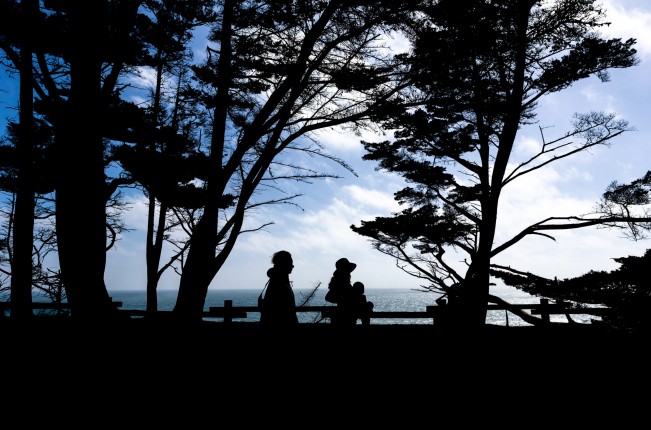
©Julia Nikhinson, Maria and Vira walk along a Moss Beach trail during their second visit to the beach since relocating to the United States from Ukraine. As a plane flew overhead—the rumble cutting through the sound of waves hitting the shoreline—Maria looked up and reflected on how only recently she would shudder every time she heard an airplane. Explosions and air raid sirens were a common occurrence in Lviv after the Russians invaded Ukraine.
Judy: Congratulations! That was a big one to get! So, what was your experience like with the shootout like? Tell me about your experience?
Julia: It was really great! Honestly, like I didn’t expect much because they email us the assignment on Tuesday and we get to San Francisco on Friday, so it’s not a lot of time to prepare and you have just a little time to shoot, so that part obviously made me very nervous. But also, I didn’t have many expectations for the social aspects of it. I’ve never really experienced anything like it. All the other finalists were amazing and I’ve never really had the opportunity to be around so many people that are both my age and around the same like skill level because I’m either the youngest one in the room or I’m training younger photojournalists, for the most part. We’re definitely going to keep in touch, probably forever. And I never really take the time to network, especially with people outside of photojournalism, like reporters, so that was great, too.

©Julia Nikhinson, Maria points out a herd of sea lions and seals on Moss Beach, remarking how May weather and the beaches in California remind her of those in Crimea. Regardless of where life or work took her, Maria said that she always made sure to spend May, her favorite month, in Ukraine.
Judy: I’m so happy that you have that experience! Tell me about your story—how did you find your story and what was it about.
Julia: I followed a refugee family—a mother and her son—he’s 12 years old. They came to the US from Ukraine at the time of the story a month before. The assignment was the “California Dream” and personal expression, so I thought if this isn’t the California Deream than what is?
I stayed with them for a few days and followed them. I was with them when they got to see San Francisco for the first time, because they came to stay with the mother’s brother who lives 30 minutes from San Francisco, so they’de never actually seen the city before. Then I went with them to Panera after like a soccer game, and it was their first time, not only eating at Panera but also their first time eating at any restaurant in the United States, so that was a cool experience for them. I got to talk to them about how this compares to Ukraine and what this means to them.
When I got the prompt like I came up with a few ideas, but this is the one really stuck because I some of the most powerful work we see in photojournalism is the stuff that the journalist relates to and has a unique perspective on, which is why representation is so important in this field.
I decided to tell that story, because at one point, that was my family. And no one else there could have told this story just because they don’t know the language so they just couldn’t talk to them, which, like is also why I wanted to tell the story, as well.
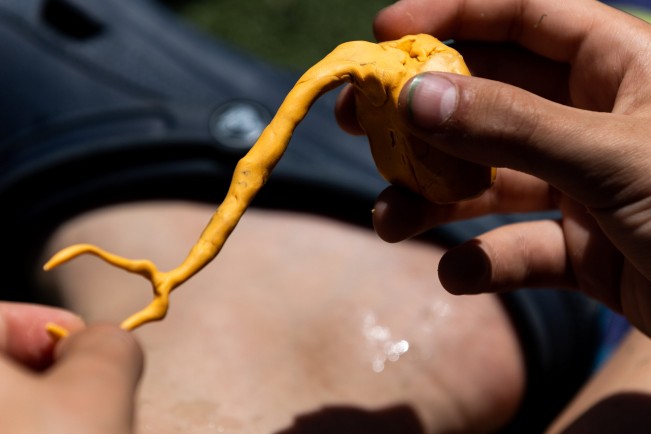
©Julia Nikhinson, Petro sculpts a piece of clay. Since he was two, Petro has constantly sculpted with clay, an outlet for both anxiety and creative passion.
Judy: How did you find it?
Julia: Before I left for San Francisco I started reading about it and seeing if any local news outlets have done anything similar and reported on refugees coming across the border, but nothing where they actually followed a refugee family and to see what it’s like.
So, once I read a bunch of articles it was clear there was one main foundation helping people from Ukraine—setting them up with families. It was same guy quoted and so I tracked down his contact information and barraged him with emails and DMs. He was very happy to help me and got me in touch with a woman whose mother and grandmother came over. I called her and she said, “I don’t think my mother and grandmother would be the best fit, but I’ll connect you with a few families.” So, she connected me with my family and another one.
I tried other things as well, like looking through Facebook groups and I scrolled through a Ukrainian group for the Bay Area. I also reached out to a source from the Washington Post who works with like Ukrainian refugees. It’s all connected and came together, so I managed to find someone.
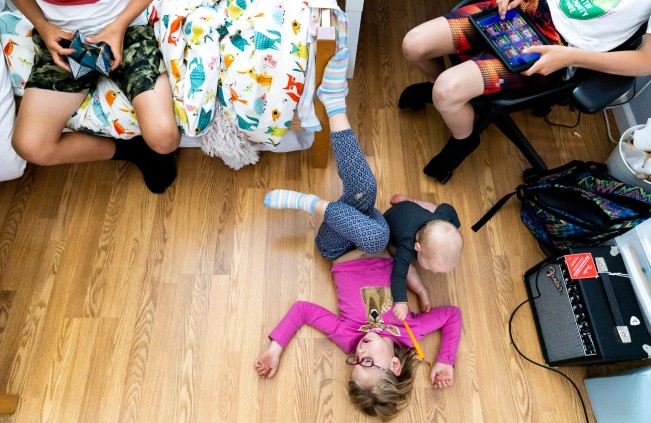
©Julia Nikhinson, Julia smacks her 6-year-old sister Paola with a toothbrush while Petro plays Brawl Stars after coming home from school. Lyke, Paola and Petro now share a bedroom.
Judy: It sounds like you really used your journalistic expertise and you’re relentless in your research! Have you always been like that or is that a skill that you’ve learned along the way?
Julia: I have always been a very relentless person—annoying to some people. I think that’s why journalism is such a great fit because it lets me use some of my very base qualities for a really good purpose.
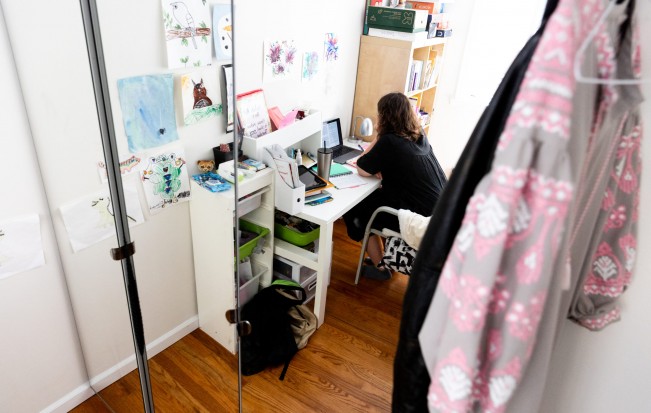
©Julia Nikhinson, Maria works as a volunteer therapist from her home office. Maria has focused on trauma therapy since the start of the war in Ukraine, focusing on supporting women who have been forced to become single mothers as a result of the war. She has also begun actively supporting efforts to grant the right to work to Ukrainian refugees on humanitarian parole in the United States. “Visas are almost impossible to get, the waiting line is so long,” said Maria.
Judy: Do you had any advice for an incoming freshman who’s thinking about photojournalism or documentary storytelling?
Julia: I would say that I think a lot of like stuff you hear about it is wrong and you shouldn’t let that stop you. You don’t have to be a journalism major to become a journalist. And if you’re not getting internships at first—it took me so long to find places that would take me for an internship—keep working and like me—you might go from not being able to find an internship to being with the AP! Everything is possible in this field. It just really depends on who you talk to, and just meeting people. It’s a lot of work this isn’t a job for someone who wants to just make money. You really have to love it because you’re not going to make enough money that you can just do it like without loving it. You really have to be passionate about it.
It’s the best job in the world, so just keep working at it. And don’t give up.
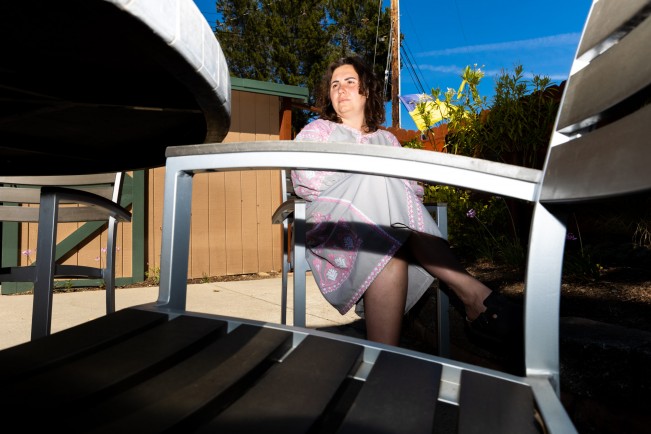
©Julia Nikhinson, Maria wears her vyshyvanka, a national Ukrainian embroidered shirt. May 19 is Vyshyvanka Day, a celebration of Ukrainian identity, inclusion and culture. This year the kids showed off their outfits and culture as part of a talent show at school.
Judy: I agree 100%. I think that there’s no better job in the world— other than for me—I’m a mom too, so I love that job, too.
Judy: Is there anything I didn’t ask that you’d like to add, Julia?
Julia: I’m just very grateful for everyone that helped me get to this point. I couldn’t have done it without my family, my friends, my boyfriend, my teachers and my editors that took a chance on me when I wasn’t very good.
Judy: What a great way to end! Thanks!
![E. Maria and Petro bask in the sun on Moss Beach. While they’re not here by choice, Maria and Petro are grateful for the refuge that Yegor’s family has provided for them in California. “[When the war started] it was scary because we were never sure of what would happen next. Russia could take Ukraine off the face of the planet.” Maria said. “Now it’s not as scary because we know what will happen.”](http://lenscratch.com/wp-content/uploads/2022/06/E_2022-Championship_JuliaNikhinson_14-scaled-651x434.jpeg)
©Julia Nikhinson, Maria and Petro bask in the sun on Moss Beach. While they’re not here by choice, Maria and Petro are grateful for the refuge that Yegor’s family has provided for them in California. “[When the war started] it was scary because we were never sure of what would happen next. Russia could take Ukraine off the face of the planet.” Maria said. “Now it’s not as scary because we know what will happen.”
MSU J-School Associate Director and Professor of Practice Judy Walgren is an award-winning photographic artist, teacher, photo editor, curator and writer. received her MFA in Visual Art from the Vermont College of Fine Art in January 2016 where she began her exploration into the disruption of historic visual archives. From 2010 to 2015, she was the Director of Photography at the San Francisco Chronicle, where she managed a staff of visual content producers, photo editors and pre-press imagers for print and digital platforms. During her tenure at the Chronicle, her team won multiple Emmy Awards for their multimedia pieces and they earned Photo Editing Team of the Year from Best of Photojournalism. She has also worked for the Denver Post, The Rocky Mountain News and the Dallas Morning News. Walgren received a Pulitzer Prize for International Reporting with a team from the Morning New for their series dealing with violent human rights against women. She lives in San Francisco.
Follow Judy Walgren on Instagram: @judywalgren
Posts on Lenscratch may not be reproduced without the permission of the Lenscratch staff and the photographer.
Recommended
-
Arnold Newman Prize: C. Rose Smith: Scenes of Self: Redressing PatriarchyNovember 24th, 2025
-
Celebrating 20 Years of Critical Mass: Cathy Cone (2023) and Takeisha Jefferson (2024)October 1st, 2025
-
Celebrating 20 Years of Critical Mass: George Nobechi (2021) and Ingrid Weyland (2022)September 30th, 2025
-
Celebrating 20 Years of Critical Mass: Amy Friend (2019) and Andrew Feiler (2020)September 29th, 2025
-
Celebrating 20 Years of Critical Mass: Jennifer McClure (2017) and JP Terlizzi (2018)September 28th, 2025

